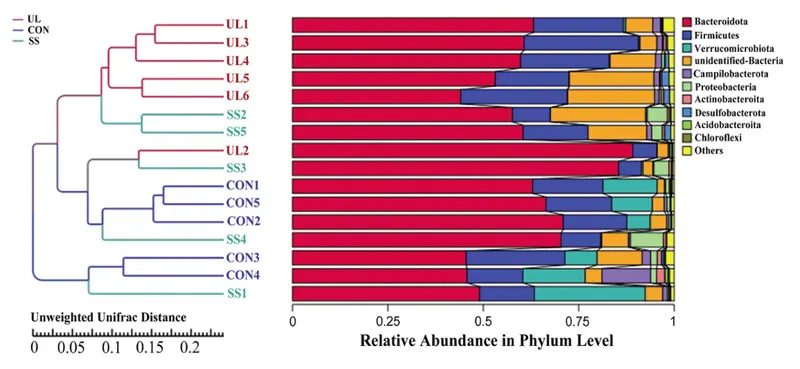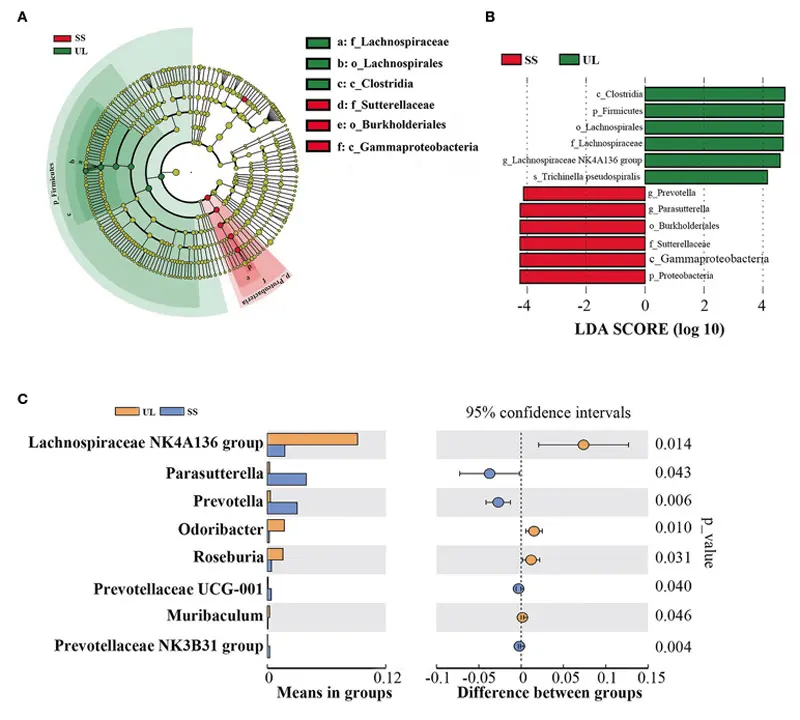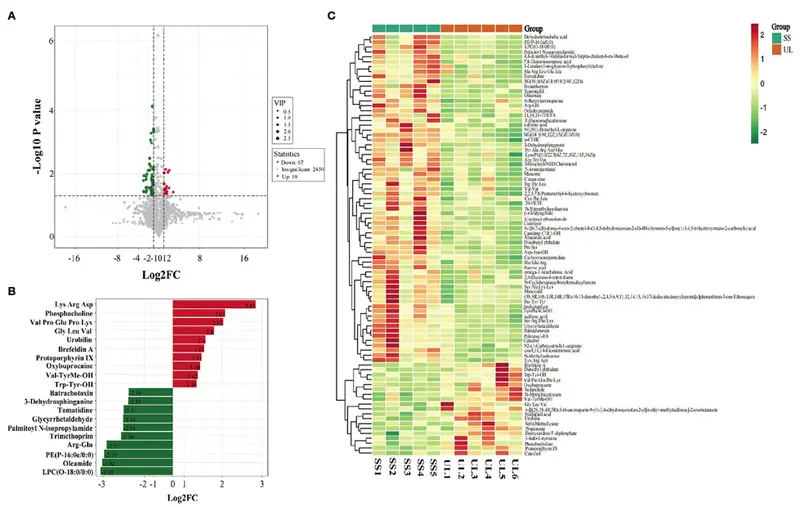Microbiome Metabolomics Sequencing Service
Microbiome often gives an indication of the health of the system, whether the system is from human gut, water reservoir, or agriculture soil. The microbes in the system exert its functions by producing metabolites that interact with the host or nearby species. Understanding the makeup of the microbiome and the metabolite profile is increasingly important. Metabolomics is primary technology that can detect and quantify large number of metabolites in a high throughput fashion.
Case Study: Gut Microbiome and Metabolome Changes in Mice With Acute Vestibular Deficit (Li et al., Front Cell Infect Microbiol 2022)
Gut microbiota and the brain communicate via various routes, forming the microbiota–gut–brain axis and thereby modulates psychiatric conditions by producing neurotransmitters and short-chain fatty acids. The authors hypothesized that the gut microbiota may be involved in the comorbidity of vestibular deficit and anxiety and thus constructed a unilateral labyrinthectomy mouse model to simulate vestibular deficit.
Unilateral Labyrinthectomy Shaped the Gut Microbiome Composition
Using 16S rRNA sequencing, a total of 1,698 OTUs were detected from the Silva 138 database and 1,695 (99.82%) OTUs were annotated. Bacteroidota was the predominant phylum in the mouse’s gut microbiome, followed by phyla Firmicutes and Verrucomicrobiota. However, the relative abundance of Verrucomicrobiota and Proteobacteria was much lower in UL group compared to those in CON and SS groups. Comparing the gut microbial community between the UL and SS groups, the authors found the abundance of Lachnospiraceae NK4A136 group, Prevotella, Parasutterella, Odoribacter and Roseburia were significantly different between the two groups.


Unilateral Labyrinthectomy Altered the Gut Metabolome
The gut metabolomic profiles were determined by LC-MS. Sixty-six differential metabolites were detected in the CON versus SS group, and 86 were detected in the SS versus UL group. The levels of 25 metabolites increased significantly, while those of 41 metabolites decreased significantly, in the SS group compared to the CON group. In the UL group, the levels of 19 metabolites increased significantly while those of 67 decreased significantly compared to the SS group.

Correlations Between the Gut Microbiota and Metabolites in the Unilateral Labyrinthectomy Mouse Model
Spearman's correlation coefficient was calculated to determine the functional correlations between the changes in the gut microbiome and metabolites profiles. The results showed that the oleamide level was negatively correlated with Odoribacter abundance (r = -0.891, p-value = 0.00023). The butyric acid level was positively correlated with Parasutterella abundance (r = 0.845, p-value = 0.00105). The propanoate level was negatively correlated with Prevotella abundance (r = -0.809, p-value = 0.00256). The 20-hydroxyeicosatetraenoic acid (20-HETE) level was positively correlated with Parasutterella abundance (r = 0.836, p = 0.00133). Taken together, the authors described that the gut microbiome composition of mice and gut metabolome are significantly altered after unilateral labyrinthectomy. Moreover, the differential genus and metabolites found in the gut of the mice in the UL group were in close relation to the anxiety regulation of the animals.


